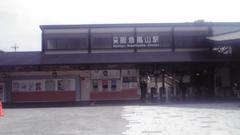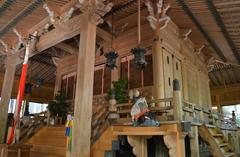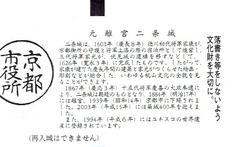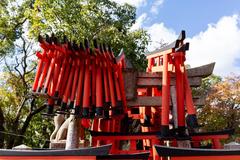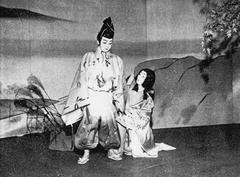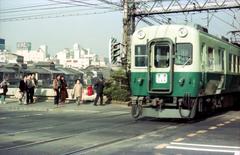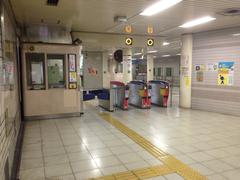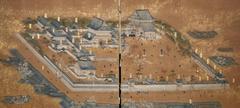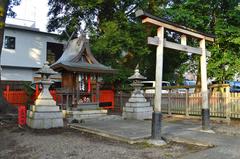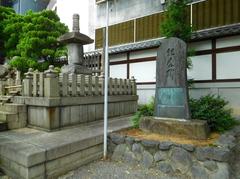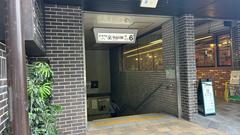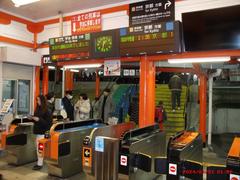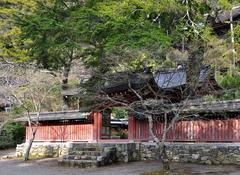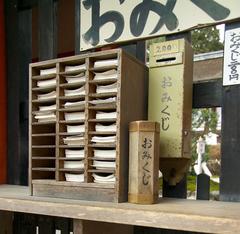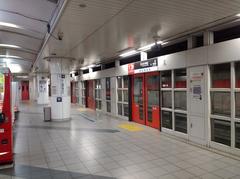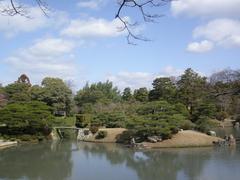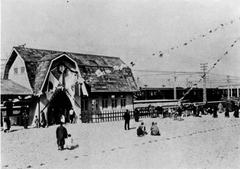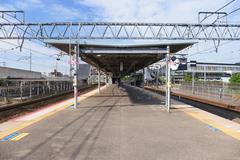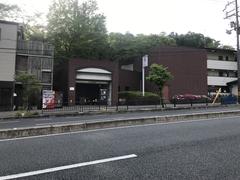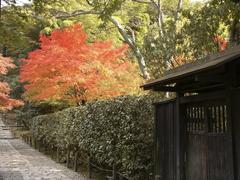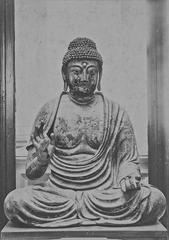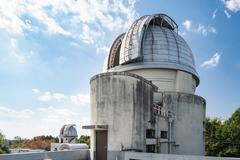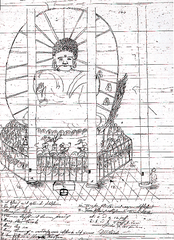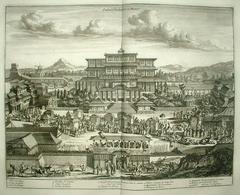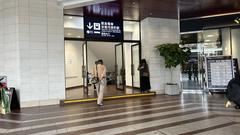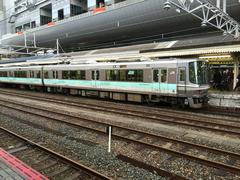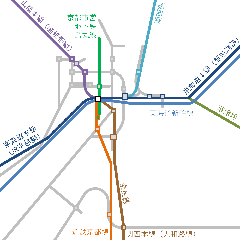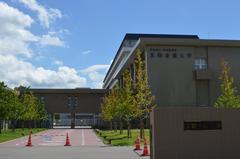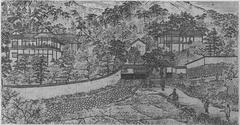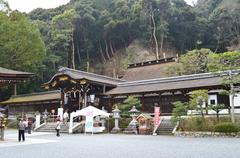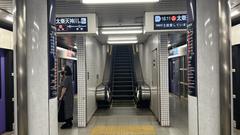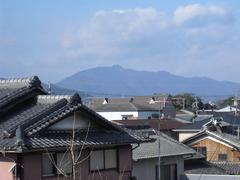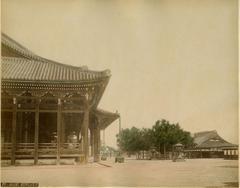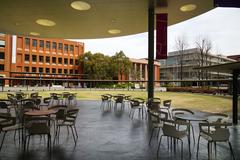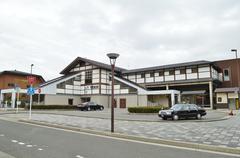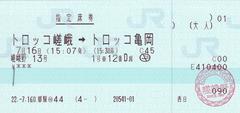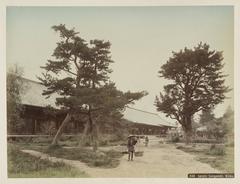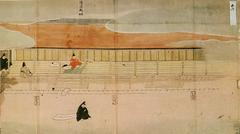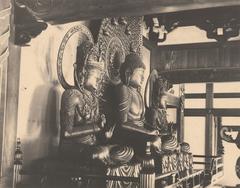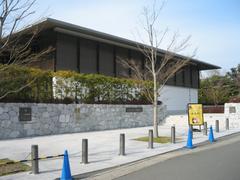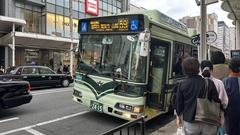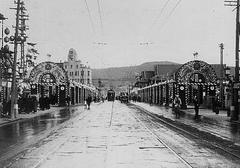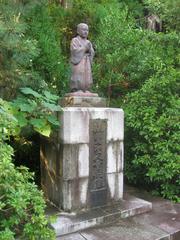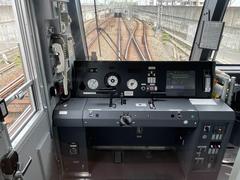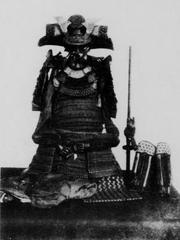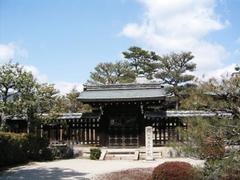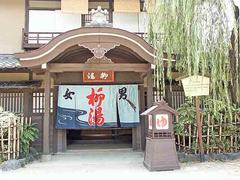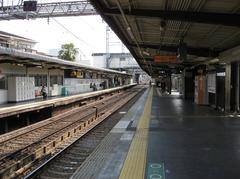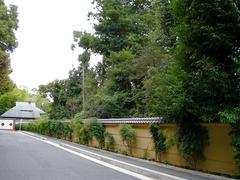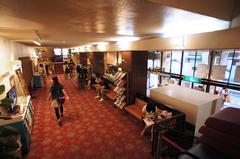
Complete Guide to Visiting Ōmiya Station Kyoto, Japan: Visiting Hours, Tickets, and Nearby Attractions
Date: 03/07/2025
Introduction
Nestled in Kyoto’s Nakagyō-ku district, Ōmiya Station (大宮駅) stands as a key transit hub for both daily commuters and visitors eager to explore the city’s rich tapestry of history, culture, and urban charm. Connected by the Hankyu Kyoto Line and adjacent to the Shijō-Ōmiya terminus of the Randen tram, Ōmiya Station offers seamless access to Kyoto’s iconic sites, including Nijo Castle, Nishiki Market, and Arashiyama. This guide provides detailed, up-to-date information on Ōmiya Station’s facilities, ticketing, accessibility, nearby attractions, and practical travel tips—enabling you to make the most of your Kyoto experience.
For official travel information, consult resources such as the Hankyu Railway official website, Kyoto Station information portals, and trusted travel guides: Travel Pander, Flip Japan Guide.
Table of Contents
- Historical Development of Ōmiya Station
- Role in Kyoto’s Urban and Cultural Evolution
- Visiting Hours and Ticket Information
- Accessibility and Facilities
- Architectural and Infrastructural Features
- Station Layout and Transfers
- Facilities Overview
- Access to Historic Sites
- Practical Visitor Information
- Transportation and Connectivity
- Visiting Key Historical Sites
- FAQs
- Summary Table: Key Transport Options
- Visual Aids
- Conclusion and Recommendations
- References
Historical Development of Ōmiya Station
Ōmiya Station opened in 1931 as part of Kyoto’s modernization and urban expansion (DBpedia). Its underground design reflects a balance between preserving Kyoto’s historic streets and integrating efficient, modern transit. The station’s establishment was pivotal in linking Kyoto with Osaka and other major urban centers, thereby supporting local economic growth and the city’s burgeoning tourism sector. Its proximity to the Shijō-Ōmiya Randen tram terminus highlights its early and continued role as a major interchange, especially for travelers heading to the scenic Arashiyama district (Wikipedia).
Role in Kyoto’s Urban and Cultural Evolution
Located in Nakagyō-ku, Ōmiya Station is at the heart of Kyoto’s commercial, artisanal, and entertainment districts. Its development contributed to the revitalization of this historic area, improving access to traditional crafts, markets, and performing arts. The station has long served as a gateway for both locals and tourists, facilitating convenient travel to major landmarks like Nijo Castle, Nishiki Market, and the Gion district (Visit Inside Japan). This accessibility is vital to Kyoto’s tourism ecosystem, which welcomes millions annually (Travel Pander).
Visiting Hours and Ticket Information
- Station Hours: Generally 6:00 AM to last train (~midnight)
- Ticketing: Automated machines (Japanese/English), staffed counters, and IC card compatibility (ICOCA, SUICA, PiTaPa)
- Fares: Single-journey tickets (150–400 yen, depending on destination), IC cards, and special tourist passes available
- Randen Tram Tickets: Purchase at Shijō-Ōmiya Station or on the tram (220 yen per ride)
For up-to-date fares and operating hours, check the Hankyu Railway official website.
Accessibility and Facilities
Ōmiya Station is designed for universal access:
- Elevators and escalators connect all levels
- Tactile paving and ramps for the visually and mobility-impaired
- Accessible restrooms and baby care facilities
- Bilingual signage (Japanese/English) and staff support
- Coin lockers for luggage (small/medium sizes)
- Free Wi-Fi at nearby cafés and convenience stores
Architectural and Infrastructural Features
Ōmiya Station’s underground structure minimizes its impact on the historic cityscape while providing efficient and safe transit. The station’s layout is practical, with clear signage and passenger flow, and is directly connected to the Randen tram line for easy transfers (DBpedia; Wikipedia). The surrounding area features shopping arcades, dining, and seasonal cultural events.
Station Layout and Transfers
- Ground Level: Entrances/exits, bus stops, and taxi stands
- Concourse: Ticket gates, fare adjustment machines, IC card charging, and station office
- Platforms: Two island platforms with platform doors, elevators, and escalators
- Transfers: Direct access to Shijō-Ōmiya Station (Randen tram) for Arashiyama and western Kyoto
Facilities Overview
- Ticketing: Machines (Japanese/English), IC card sales/recharge, staffed counters
- Shops/Dining: Nearby 7-Eleven, Lawson, bakeries, izakayas, ramen, and local boutiques
- Waiting Areas: Benches, sheltered spaces, accessible restrooms, and baby changing stations
- Luggage: Coin lockers; large storage options at nearby Kyoto Station
- Connectivity: Free Wi-Fi at adjacent cafés; eSIM/portable Wi-Fi recommended for continuous access
Access to Historic Sites
Ōmiya Station provides rapid access to Kyoto’s major attractions:
- Nijo Castle: 15–20 min walk or short bus ride (open 8:45 AM–5:00 PM, last entry 4:00 PM; 1,030 yen/adult)
- Nishiki Market: 10–15 min walk east (open 9:00 AM–6:00 PM, free entry)
- Arashiyama: 20 min scenic tram ride via Randen line (tram fare 220 yen)
- Gion District/Yasaka Shrine: Accessible via Hankyu Line/bus; Yasaka Shrine open year-round (free entry)
- Mibu-dera Temple: 10 min walk south (open 9:00 AM–5:00 PM, free entry)
Practical Visitor Information
- Monument Tickets: Buy at sites (cash/credit card), or online for major attractions
- Best Times to Visit: Off-peak hours (mid-morning/afternoon); avoid festival rush
- IC Cards: Strongly recommended for seamless travel across all modes (Kyoto Travel Tips, Flip Japan Guide)
- Luggage: Use coin lockers or Kyoto Station’s larger storage for convenience
- Tourist Info: Kyoto Station Tourist Information Center offers maps, multilingual support, travel advice
Transportation and Connectivity
Rail and Tram
- Hankyu Kyoto Line: Direct trains to Osaka Umeda (40–45 min), Karasuma, and Kawaramachi
- Randen Tram: Direct to Arashiyama and Kitano Tenmangu Shrine (Keifuku Randen Line Guide, Kyoto Station)
Subway and Bus
- Kyoto Municipal Subway: Closest station is Shijo (Karasuma Line), ~10 min walk
- City Buses: Direct to Kinkaku-ji, Gion, Kyoto Station
- Airport Limousine Bus: Stops at Shijo Omiya, three times daily
Taxis and Cycling
- Taxi: Readily available; Kyoto Station ~5 min, 1,200–1,700 yen
- Cycling: Rentals near station (1,000–1,500 yen/day), bike-friendly city
IC Cards and Sightseeing Passes
- IC Cards: ICOCA, SUICA, PASMO accepted on all major lines and buses
- 1-Day Kyoto Sightseeing Pass: Unlimited rides on Keihan lines and affiliates (Kyoto Travel Tips, Flip Japan Guide)
Visiting Key Historical Sites
- Nijo Castle: UNESCO World Heritage, 8:45 AM–5:00 PM, 1,030 yen/adult
- Kyoto Imperial Palace: Free admission, guided tours require reservation
- Kinkaku-ji (Golden Pavilion): 9:00 AM–5:00 PM, 400 yen/adult
- Gion District: Year-round access, best explored on foot
FAQs
Q: What are Ōmiya Station’s operating hours?
A: Approximately 6:00 AM to midnight, in line with the Hankyu Kyoto Line schedule.
Q: Are IC cards accepted?
A: Yes, ICOCA, SUICA, PiTaPa, PASMO, and others are accepted at gates and machines.
Q: How do I get to Nijo Castle?
A: A 15–20 min walk north, or a short bus ride.
Q: Is the station accessible for wheelchairs?
A: Yes, with elevators, ramps, tactile paving, and accessible restrooms.
Q: Where can I find tourist information?
A: At Kyoto Station Tourist Information Center (maps, multilingual staff).
Summary Table: Key Transport Options at Ōmiya Station
| Mode | Main Destinations | Frequency | Typical Fare | Notes |
|---|---|---|---|---|
| Hankyu Line | Osaka, Karasuma, Kawaramachi | 5–10 min | 230–400 yen | Direct to Osaka, connects to subway at Karasuma |
| Randen Tram | Arashiyama, Kitano Tenmangu | 10–15 min | 220 yen | Scenic retro tram experience |
| Subway | Kyoto Station, Imperial Palace | 5–10 min | 210–260 yen | Transfer at Shijo/Karasuma |
| Bus | Kinkaku-ji, Gion, Kyoto Station | 10–20 min | 230 yen | IC cards accepted; can be crowded |
| Taxi | Anywhere in Kyoto | On demand | 1,200–1,700 yen | Fast for short distances, especially with luggage |
| Walking | Nijo Castle, Nishiki Market | N/A | Free | Many attractions within 2–3 km |
| Cycling | Citywide | N/A | 1,000–1,500 yen/day | Rentals near station |
Visual Aids
For detailed maps and virtual tours of Ōmiya Station and surrounding sites, refer to official resources:
Conclusion and Recommendations
Ōmiya Station is much more than a transit point—it is a vibrant entryway to Kyoto’s living heritage. With its thoughtful design, accessibility, and direct links to must-see sites, the station is an ideal base for exploring the city’s historic districts, culinary delights, and cultural festivals. For a seamless journey, plan your routes in advance, make use of IC cards, and consult digital navigation tools. Embrace Kyoto’s unique blend of tradition and modernity, starting your adventure at Ōmiya Station.
Call to Action
Download the Audiala app for real-time travel updates, insider Kyoto tips, and exclusive guides to the city’s top attractions. Explore our related posts on historical sites and cultural events, and follow us on social media for the latest travel inspiration!
References
- Ōmiya Station (Kyoto): Visiting Hours, Tickets, and Nearby Historical Sites, 2025, Visit Inside Japan
- Ōmiya Station Kyoto: Layout, Facilities, and Access to Kyoto’s Historic Sites, 2025, Hankyu Railway
- Transportation Options and Connectivity for Visiting Kyoto’s Historical Sites via Ōmiya Station, 2025, Kyoto Station
- Ōmiya Station Kyoto: Visiting Hours, Tickets, Nearby Attractions, and Travel Tips, 2025, Travel Pander
- Kyoto Travel Tips, 2025, Flip Japan Guide
- Ōmiya Station (Kyoto) DBpedia entry, 2025
- Shijō-Ōmiya Station Wikipedia, 2025



















